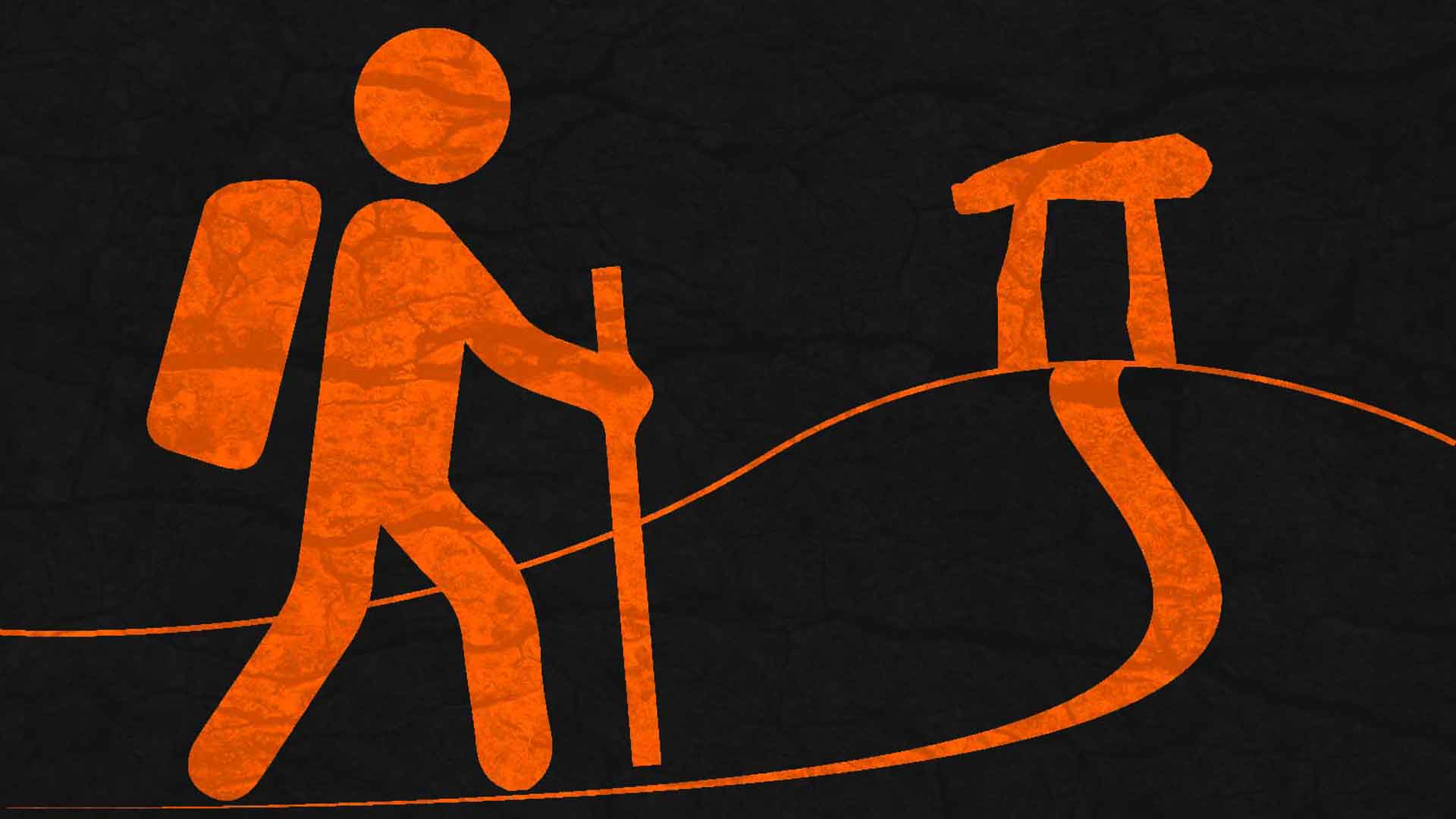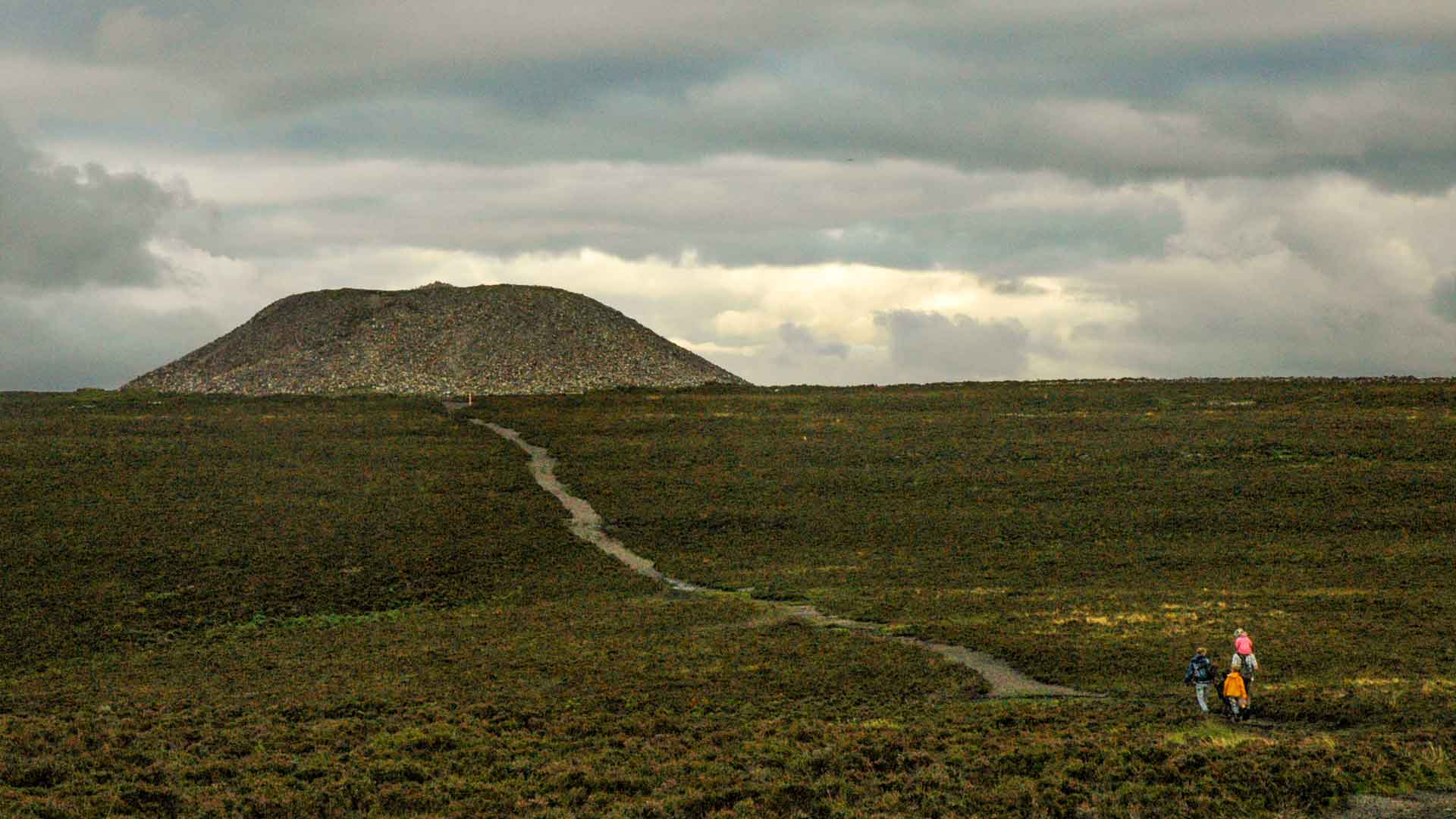
Visitor Guidelines
• Where a monument is on private land, please contact the owner before accessing it. The owner will tell you if access is permitted, and is the best person to direct you to the monument via the easiest and safest route.
• Farmland is private property and access is only available with the goodwill and tolerance of landowners. While most landowners do not object to recreational users crossing their land, others do not permit access. Their wishes must always be respected and complied with.
• Try to find a guide, a specialist or local person that knows the area. It will probably save you time, as you won’t get lost and you will probably learn more about the monument itself.
• Do not add anything - it is perfect as it is. Litter and leftover food doesn’t just spoil the beauty of the monuments; they can be dangerous to wildlife and farm animals – so take your litter home with you.
• Do not attempt to move, remove or take away any part of a monument, no matter how small or insignificant you think it may be.
• Do not sit walk or climb on any parts of the monuments with special care given to any decorated rock surfaces. Some structures and surfaces are dangerous and apart from damaging them, it could cause injury or worse, to you, the visitor.
• Contact the appropriate authorities if you notice any form of vandalism or destruction of monuments or their immediate surroundings.
• Do not damage the immediate area. Do not cut branches from trees, light fires or leave things behind you - especially rubbish.
• Respect the needs of local people and visitors alike – for example, don’t block gateways, driveways or other access routes with your vehicle.
• Do not enter farmland if you have dogs with you, even if on a leash, unless you have obtained prior permission of the landowner.
• Cooperate with people at work in the countryside. For example, keep out of the way when farm animals are being assembled or moved and follow directions from the farmer.
• When driving be exceptionally vigilant on narrow country roads – so slow down and where possible, leave your vehicle at home, consider sharing lifts and use alternatives such as public transport or cycling.
• Leave gates as you find them or follow instructions on signs. Farmers usually close gates to keep farm animals in, but sometimes may leave them open so animals can reach food and water. When in a group, make sure the last person knows how to leave the gates.
• Follow paths unless wider access is available, such as on open country or commonage .
• Do not interfere with either machinery or farm animals. If you consider an animal to be in distress alert the landowner as soon as possible. Animals can behave unpredictably if you get too close, especially if with their young: give them plenty of space.
• Use gates, stiles or gaps in field boundaries where possible – climbing over walls, hedges and fences can cause damage.
• You are responsible for your own safety and for others in your care, especially children. Be prepared for natural hazards, changes in weather and other events. Weather conditions can change rapidly especially on mountains and along the coast, so don’t be afraid to turn back.
• Do not disturb the peace. Respect other visitors and the countryside.

The Monumental Ireland application and website are information guides only and do not act as an invitation to enter any of the properties or sites listed. No responsibility is accepted by the creators of the Monumental Ireland application for any loss, injury or inconveniences sustained as a result of using it.

Visitor Guidelines
• Where a monument is on private land, please contact the owner before accessing it. The owner will tell you if access is permitted, and is the best person to direct you to the monument via the easiest and safest route.
• Farmland is private property and access is only available with the goodwill and tolerance of landowners. While most landowners do not object to recreational users crossing their land, others do not permit access. Their wishes must always be respected and complied with.
• Try to find a guide, a specialist or local person that knows the area. It will probably save you time, as you won’t get lost and you will probably learn more about the monument itself.
• Do not add anything - it is perfect as it is. Litter and leftover food doesn’t just spoil the beauty of the monuments; they can be dangerous to wildlife and farm animals – so take your litter home with you.
• Do not attempt to move, remove or take away any part of a monument, no matter how small or insignificant you think it may be.
• Do not sit walk or climb on any parts of the monuments with special care given to any decorated rock surfaces. Some structures and surfaces are dangerous and apart from damaging them, it could cause injury or worse, to you, the visitor.
• Contact the appropriate authorities if you notice any form of vandalism or destruction of monuments or their immediate surroundings.
• Do not damage the immediate area. Do not cut branches from trees, light fires or leave things behind you - especially rubbish.
• Respect the needs of local people and visitors alike – for example, don’t block gateways, driveways or other access routes with your vehicle.
• Do not enter farmland if you have dogs with you, even if on a leash, unless you have obtained prior permission of the landowner.
• Cooperate with people at work in the countryside. For example, keep out of the way when farm animals are being assembled or moved and follow directions from the farmer.
• When driving be exceptionally vigilant on narrow country roads – so slow down and where possible, leave your vehicle at home, consider sharing lifts and use alternatives such as public transport or cycling.
• Leave gates as you find them or follow instructions on signs. Farmers usually close gates to keep farm animals in, but sometimes may leave them open so animals can reach food and water. When in a group, make sure the last person knows how to leave the gates.
• Follow paths unless wider access is available, such as on open country or commonage .
• Do not interfere with either machinery or farm animals. If you consider an animal to be in distress alert the landowner as soon as possible. Animals can behave unpredictably if you get too close, especially if with their young: give them plenty of space.
• Use gates, stiles or gaps in field boundaries where possible – climbing over walls, hedges and fences can cause damage.
• You are responsible for your own safety and for others in your care, especially children. Be prepared for natural hazards, changes in weather and other events. Weather conditions can change rapidly especially on mountains and along the coast, so don’t be afraid to turn back.
• Do not disturb the peace. Respect other visitors and the countryside.

The Monumental Ireland application and website are information guides only and do not act as an invitation to enter any of the properties or sites listed. No responsibility is accepted by the creators of the Monumental Ireland application for any loss, injury or inconveniences sustained as a result of using it.

Visitor Guidelines
• Where a monument is on private land, please contact the owner before accessing it. The owner will tell you if access is permitted, and is the best person to direct you to the monument via the easiest and safest route.
• Farmland is private property and access is only available with the goodwill and tolerance of landowners. While most landowners do not object to recreational users crossing their land, others do not permit access. Their wishes must always be respected and complied with.
• Try to find a guide, a specialist or local person that knows the area. It will probably save you time, as you won’t get lost and you will probably learn more about the monument itself.
• Do not add anything - it is perfect as it is. Litter and leftover food doesn’t just spoil the beauty of the monuments; they can be dangerous to wildlife and farm animals – so take your litter home with you.
• Do not attempt to move, remove or take away any part of a monument, no matter how small or insignificant you think it may be.
• Do not sit walk or climb on any parts of the monuments with special care given to any decorated rock surfaces. Some structures and surfaces are dangerous and apart from damaging them, it could cause injury or worse, to you, the visitor.
• Contact the appropriate authorities if you notice any form of vandalism or destruction of monuments or their immediate surroundings.
• Do not damage the immediate area. Do not cut branches from trees, light fires or leave things behind you - especially rubbish.
• Respect the needs of local people and visitors alike – for example, don’t block gateways, driveways or other access routes with your vehicle.
• Do not enter farmland if you have dogs with you, even if on a leash, unless you have obtained prior permission of the landowner.
• Cooperate with people at work in the countryside. For example, keep out of the way when farm animals are being assembled or moved and follow directions from the farmer.
• When driving be exceptionally vigilant on narrow country roads – so slow down and where possible, leave your vehicle at home, consider sharing lifts and use alternatives such as public transport or cycling.
• Leave gates as you find them or follow instructions on signs. Farmers usually close gates to keep farm animals in, but sometimes may leave them open so animals can reach food and water. When in a group, make sure the last person knows how to leave the gates.
• Follow paths unless wider access is available, such as on open country or commonage .
• Do not interfere with either machinery or farm animals. If you consider an animal to be in distress alert the landowner as soon as possible. Animals can behave unpredictably if you get too close, especially if with their young: give them plenty of space.
• Use gates, stiles or gaps in field boundaries where possible – climbing over walls, hedges and fences can cause damage.
• You are responsible for your own safety and for others in your care, especially children. Be prepared for natural hazards, changes in weather and other events. Weather conditions can change rapidly especially on mountains and along the coast, so don’t be afraid to turn back.
• Do not disturb the peace. Respect other visitors and the countryside.

The Monumental Ireland application and website are information guides only and do not act as an invitation to enter any of the properties or sites listed. No responsibility is accepted by the creators of the Monumental Ireland application for any loss, injury or inconveniences sustained as a result of using it.
